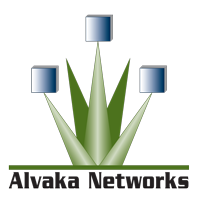How to Use Forensic Analysis to Improve Ransomware Defense
Understanding the Threat: The Rising Tide of Ransomware Attacks
Using forensic analysis for ransomware defense has become an indispensable strategy in our protocol to secure digital assets and maintain operational integrity. At Alvaka, we recognize the urgency posed by the proliferation of ransomware attacks, which have transformed from being occasional nuisances to widespread and significant threats. The digital landscape is now replete with malicious actors, making a robust cybersecurity posture not just recommended, but essential for the continuity of business operations.
As ransomware becomes more sophisticated, it is not just large corporations that are at risk; businesses of every size have become targets for these crippling cyber assaults. Attacks that encrypt critical data and systems can bring businesses to a standstill. Understanding this, we prioritize a defense strategy that is not only strong but dynamic, adapting to new threats as they arise.
Importance of a Robust Ransomware Defense Strategy
Our approach at Alvaka is rooted in the belief that a well-rounded defense is the best means of protection. We employ advanced forensic analysis to dissect past incursions, extract valuable insights, and fortify our clients’ cybersecurity measures. This forensic perspective allows us to not only react to incidents but also to proactively prevent them. In the face of ransomware, it is imperative that we stay ahead of cybercriminals through continuous innovation and stringent protective measures designed to secure our clients’ systems.
Explaining Forensic Analysis in Cybersecurity
Forensic analysis involves meticulously examining and analyzing digital data in order to reconstruct past events, identify the methods of attack, and understand the extent of the breach. In the context of ransomware, forensic analysis serves as a critical component in developing an understanding of attack vectors and the extent of exposure. Implementing continuous forensic analysis is a proactive measure that keeps us informed about evolving cybersecurity threats. This intelligence is pivotal to enhancing ransomware defenses and ensuring that our protection strategies are airtight.
The Role of Forensic Analysis in Preemptive Defense
Fostering preemptive defensive strategies is central to our mission at Alvaka. Through forensic analysis, we can dissect the anatomy of attempted and successful ransomware attacks. This information is instrumental in identifying weaknesses and bolstering defenses before they can be exploited. We don’t just look for evidence of intrusion but scrutinize it to anticipate and protect against future attacks.
Forensic Data: A Cornerstone for IT Security Strategy
At the core of our defense strategy lies the data uncovered by forensic analysis. Examining this data allows us to patch vulnerabilities, strengthen security measures, and develop comprehensive response plans. Our team’s expertise is crucial in translating raw data into actionable intelligence. This ensures that the IT security strategies we craft for our clients are not only responsive but also preemptive, addressing potential threats before they materialize into attacks.
Proactive Measures: A Paradigm Shift in Ransomware Response
With the advent of more dynamic ransomware schemes, reactive responses have proven to be inadequate. Our mantra at Alvaka is to be preventive, not just corrective. By condensing the gap between detection and response, we highlight the benefit of proactive measures in dealing with ransomware. A quick response is essential, but anticipation and prevention play an even more crucial role in preserving the security and continuity of our clients’ businesses.
Using Forensic Analysis for Ransomware Defense: Enhancing Protection Measures
At Alvaka, we understand the critical nature of defending against the pervasive threat of ransomware. We leverage forensic analysis not only as a response tool but more crucially, as a preemptive measure against potential intrusions. By systematically dissecting previous attacks, we can strengthen our defenses, closing the gaps that could be exploited by malicious actors.
The Proactive Approach to Forensic Investigation
Our team adopts a hands-on approach to forensic analysis, scrutinizing system logs, detecting anomalies, and mitigating risks before they lead to security breaches. We believe that the insight gained from detailed investigations empowers us to build robust defense mechanisms. This practice significantly reduces the likelihood of successful ransomware attacks.
Furthermore, using forensic analysis for ransomware defense demands an in-depth understanding of threat vectors. Our experts analyze attack patterns, identifying how ransomware can penetrate systems undetected. Consequently, this knowledge translates into more effective security protocols and training programs that enhance our frontline defenses.
Continuous Improvement through Forensic Data
In seeking perpetual improvement of our cybersecurity posture, we consistently incorporate findings from forensic data into our strategic planning. Unearthing the root cause of past incidents allows us to address vulnerabilities systematically. As a result, we can adapt our strategies to the ever-evolving threat landscape, ensuring our clients remain resilient to ransomware threats.
Moreover, these findings are critical in configuring our advanced monitoring systems. By recalibrating our detection tools based on forensic data, we can spot and neutralize ransomware activities with greater precision, thus reinforcing our proactive defense approach.
Building a Stronger Defense with Forensic Expertise
Our team comprises seasoned professionals who possess a blend of technical acumen and investigative prowess necessary for top-tier forensic analysis. Their expertise is the backbone of our cybersecurity services, allowing us to offer unparalleled ransomware defense to our clients. Here are some key elements we prioritize in our forensic investigations:
- Extensive examination of intrusion points and attack vectors.
- Deciphering the behavior of ransomware to predict and prevent future attacks.
- Close collaboration with clients to fortify their security posture based on forensic findings.
By maintaining a vigilant eye and utilizing forensic analysis for ransomware defense, we enhance the overall security of the networks we protect. Our approach is not simply about responding to incidents; it’s about preventing them before they can cause harm.
Ultimately, our commitment at Alvaka is to foster cyber resilience. Through rigorous forensic analysis, we are continuously on the forefront, defending our clients from the tidal wave of ransomware threats, ensuring their operations run smoothly, and their data stays secure.
Did you know? Ransomware attacks cost businesses more than $75 billion per year, emphasizing the crucial role of forensic analysis in preemptive cyber defense strategies.
Consolidating Our Digital Defense Through Forensic Analysis
Using Forensic Analysis for Ransomware Defense: A Strategic Imperative
In the face of escalating ransomware threats, it is evident that robust defense mechanisms are not just an option but a necessity. As we reflect on the preventive capacities of forensic analysis, we recognize its significance in strengthening our defense against these pervasive cyberattacks. By incorporating forensic analysis into our security protocols, we are not only identifying and rectifying vulnerabilities but also preparing our business to effectively counter and mitigate the consequences of ransomware intrusions. With this analytical approach, we fortify our digital bulwarks, ensuring that our client’s data remains secure and their operations unimpeded.
Forensic Analysis: The Cornerstone of Proactive Cybersecurity
Our dedication to utilizing forensic analysis for ransomware defense goes beyond the immediate response to incidents. We embrace a culture of preemptive security, where continuous monitoring allows us to stay one step ahead of cyber adversaries. By integrating forensic data into our cybersecurity strategy, we identify patterns and tactics employed by attackers, refining our defenses and reducing the likelihood of successful incursions. Our team’s adept use of forensic tools ensures that our cybersecurity measures evolve in tandem with the dynamic nature of ransomware threats.
At the core, we acknowledge that the true power of forensic analysis lies in its capacity to transform insights into action. Our experts translate intricate forensic data into understandable and actionable intelligence, which forms the backbone of our strategic defense framework. This proactive posture empowers us, as a trusted IT management and network services provider, to safeguard our clients’ digital assets and maintain their business continuity with confidence.
Advancing Toward a Resilient Future
As we culminate our discussion on the pivotal role of forensic analysis in ransomware defense, it is our belief that the path toward a resilient future is paved with diligence, expertise, and continuous improvement. By harnessing the potential of forensic analysis, we do not merely react to threats; we predict and prevent them. This forward-thinking approach is instrumental in building a cybersecurity infrastructure that withstands the test of time and the sophistication of emerging ransomware tactics.
Our commitment to using forensic analysis for ransomware defense is unwavering, as we recognize that the safety of our clients hinges on our ability to anticipate and combat the sophisticated cyber threats of today and tomorrow. In pursuit of this endeavor, we invite businesses to join us in establishing a secure and prosperous digital environment. Together, we can transform the landscape of cybersecurity and ensure that our collective venture into the digital age is marked by triumph rather than trepidation.
For those facing the aftermath of a ransomware event, our expertise in ransomware recovery provides a beacon of hope. Our meticulous recovery efforts are designed to restore operations rapidly, minimizing downtime and the impact on business processes. In the ongoing battle against cyber threats, rest assured that with us, your digital assets are in deft hands.
FAQ
What is ransomware and why is it such a significant threat? ▼
Ransomware is a type of malicious software that encrypts a victim’s files, making them inaccessible until a ransom is paid to the attacker. This form of cyberattack is a significant threat because it can disrupt business operations, lead to data loss, and result in financial and reputational damage. We stress the importance of understanding ransomware to implement effective defense mechanisms.
How can forensic analysis help improve our defenses against ransomware? ▼
Forensic analysis plays a critical role in understanding how a ransomware attack occurred and in identifying the vulnerabilities that were exploited. By analyzing attack patterns and tracing the source, we can enhance our security stance and prevent future incidents. Moreover, forensic insights enable us to update our defensive strategies and educate our staff to recognize potential threats.
Can forensic analysis prevent ransomware attacks? ▼
While forensic analysis is typically conducted after an incident, its findings are instrumental in strengthening preemptive defenses. Through identifying system weaknesses and attack vectors, we can take actionable steps to fortify our defenses and reduce the likelihood of future attacks. Consequently, forensic analysis plays a proactive role in our overall ransomware prevention strategy.
What key components are involved in conducting effective forensic analysis? ▼
Effective forensic analysis requires a combination of advanced tools, such as intrusion detection systems and network forensic applications, alongside specialized expertise in digital forensics. Continuous monitoring and assessment of our IT environment are also essential components to ensure thorough detection and analysis of any suspicious activity.
What expertise is necessary for performing forensic investigations of ransomware? ▼
Successful forensic investigations demand a deep understanding of information security, digital forensics, and experience with a variety of cybersecurity tools. Our team consists of skilled professionals who possess the necessary knowledge to dissect ransomware attacks, unearth their origins, and recommend strategic improvements to our security infrastructure.
Why is a proactive approach to ransomware defense better than reactive? ▼
A proactive approach focuses on preventing ransomware attacks before they happen, which is preferable because it minimizes potential downtime and mitigates the risk of data loss. On the other hand, a reactive approach deals with the aftermath of an attack, which can be significantly more costly and damaging to our operations. Thus, we prioritize a proactive stance through continuous monitoring and forensic analysis to keep our networks secure.
How does forensic analysis trace the source of a ransomware attack? ▼
Forensic analysis traces the source of a ransomware attack by meticulously examining digital artifacts left behind by the attackers. This includes analyzing log files, identifying malicious code, and investigating network traffic. Through these techniques, we can often identify attack patterns, entry points, and even the attackers’ infrastructure. Understanding the origin of an attack is crucial for both remediation and strengthening defenses against future threats.
Is it possible to recover data after a ransomware attack without paying the ransom? ▼
Recovering data after a ransomware attack without paying the ransom can be achieved if proper backup protocols and recovery strategies are in place. Through our robust backup and disaster recovery planning, we are prepared to restore affected systems and minimize data loss. Additionally, forensic analysis may help identify decryption keys or vulnerabilities within the ransomware that could allow for data recovery.
How often should we conduct forensic analysis? ▼
Forensic analysis should be conducted immediately following any suspected security incident. Additionally, regular audits and proactive analysis of our systems are crucial components of a strong security posture. We ensure continuous monitoring for suspicious behavior to enable prompt detection and rapid response, which are paramount in minimizing the impact of potential ransomware threats.
What should we do if we are currently experiencing a ransomware attack? ▼
If we are experiencing a ransomware attack, the first step is to isolate the affected systems to prevent further spread. Then, we should initiate our incident response plan, which includes notifying the relevant stakeholders, securing our backups, and commencing forensic analysis to understand the scope and method of the attack. Our immediate action and the expertise of our cyber response team are essential in managing the situation effectively.








 Smoke testing is a term used to describe the testing process for servers after patches are applied.
Smoke testing is a term used to describe the testing process for servers after patches are applied.  This is a basic cost calculator for you to compute your typical monthly cost for patching your servers, PCs, laptops, tablets and associated application software. It also forms the basis for you to begin calculating your Return on Investment for software patching, or for comparison with alternatives to the manual process of patching operating systems and application software—such as Patch Management as a Service, also known as Vulnerability Management as a Service.
This is a basic cost calculator for you to compute your typical monthly cost for patching your servers, PCs, laptops, tablets and associated application software. It also forms the basis for you to begin calculating your Return on Investment for software patching, or for comparison with alternatives to the manual process of patching operating systems and application software—such as Patch Management as a Service, also known as Vulnerability Management as a Service.